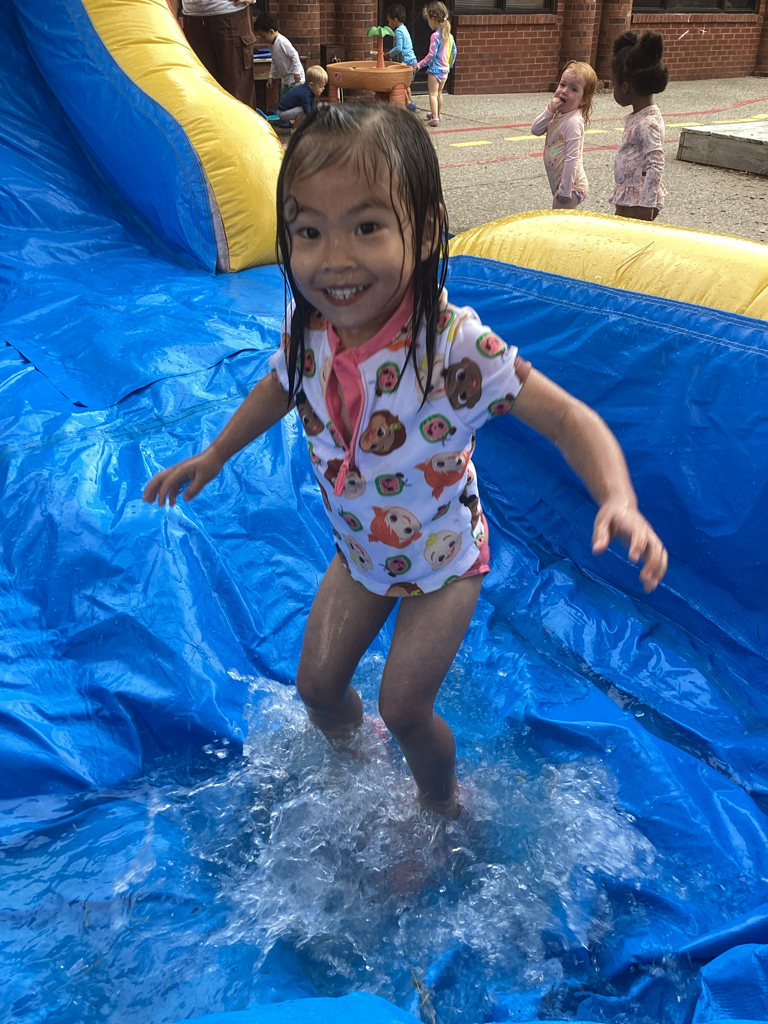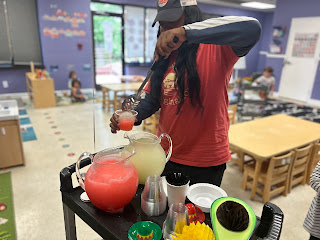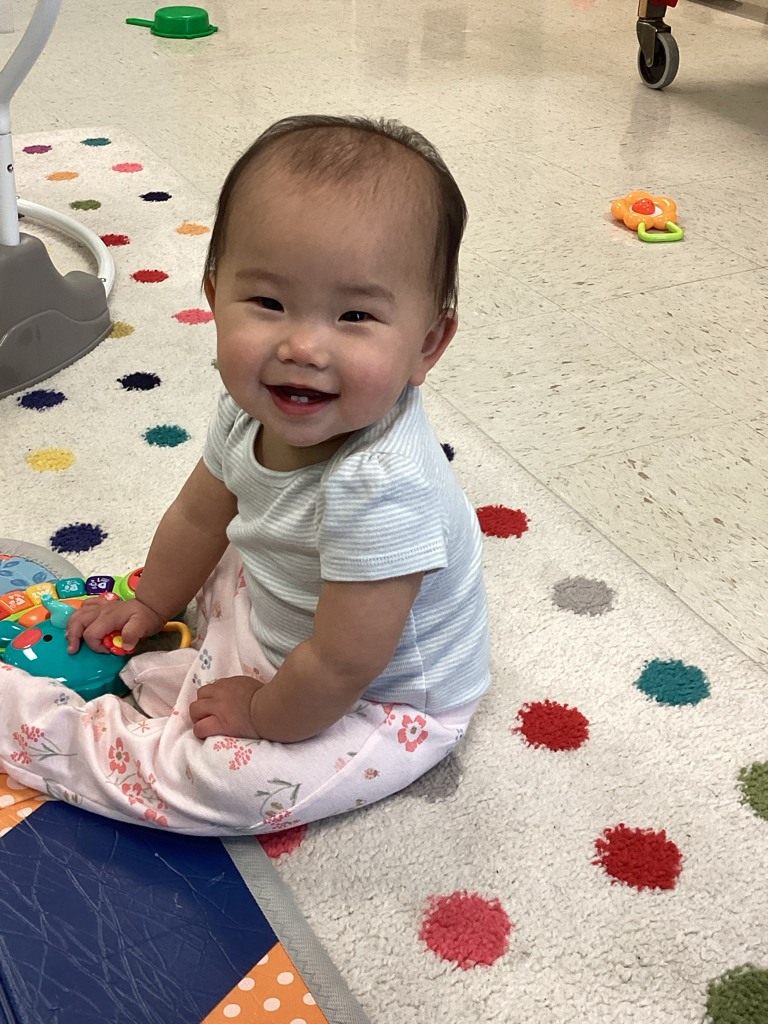It's time to vote for the Best of Parenting, Nashville Magazine best child care around! Help us make this the 18th year in a row by using the QR code below! Vote for The Academy as we dedicate ourselves to creating childhood!
Academy of Maryland Farms
Thursday, July 10, 2025
Tuesday, July 1, 2025
Local firework shows and the importance of firework safety
It's July! Fireworks, Smore's and pool parties are lighting up the month! Please take the time to read over these 10 safety suggestions for fireworks as well at some local firework displays in Davidson and Williamson county!
- Always use fireworks outside and have a bucket of water/hose nearby in case of accidents.
- Designate a safety perimeter. If you have ground-based fireworks like a fountain, spectating from at least 35 feet away is best. For aerial fireworks, you’ll want everyone to move back to a distance of around 150 feet.
- Ditch faulty fireworks. Sometimes fireworks don’t go off, but duds always pose a risk. The important thing to know is that you should never try to relight or approach a failed firework. Let duds sit for 5 -10 minutes before you put them in a bucket of water. This can prevent injury from a delayed explosion and disarm the firework permanently so you can safely dispose of it.
- Supervise children when they are handling sparklers. Sparklers burn at about 2,000 degrees Fahrenheit—hot enough to melt some metals. Sparklers can quickly ignite clothing, and children have received severe burns from dropping sparklers on their feet or touching body parts.
- Don’t forget about your pets! Fireworks can be extremely stressful for pets, but there are ways to help reduce their fear and anxiety. Keep your pets indoors. Close the curtains or blinds and turn on the TV or radio to provide some distraction. Treat toys filled with their favorite food (frozen pumpkin puree, peanut butter, and apple sauce are good options) may also help keep their minds busy and distract them from the firework
- Soak both spent and unused fireworks in water for a few hours before discarding.
- Never place a part of your body directly over a firework or hold a firework in your hand when lighting. To safely light fireworks, make sure they are secured on the ground away from people and animals and use a stem lighter such as a grill lighter.
- Only light one firework at a time. Lighting multiple fireworks at the same time increases the risk of accidents occurring from the fuse burning faster than designed.
- Avoid alcohol consumption when handling or using fireworks. This should be pretty self-explanatory.
- Consider safe alternatives to fireworks such as party poppers, bubbles, silly string, or glow sticks.
Davidson County
Music City July Fourth in downtown Nashville features a free fireworks show and live music headlined by Dierks Bentley.
Music City Hot Chicken Festival is bringing the heat to East Nashville this Fourth of July. The event in East Park kicks off at 10:30 a.m. with an antique fire truck parade.
July 4th Fireworks Cruise with Pontoon Saloon is for you if watching the fireworks from the ground isn’t enough. Hop on a boat!
Luke Combs’ Big USA Party at Category 10 is a week-long Fourth of July celebration with rooftop views of the Music City fireworks show.
Williamson County
Fairview’s Annual July Third Celebration at City Hall features live music, food trucks and entertainment on July 3. Fireworks begin at 9:30 p.m.
Franklin on the Fourth in downtown Franklin is a celebration with a pet parade and children’s parade. There will also be music, food and crafts.
Fourth of July at The Park at Harlinsdale Farm will have food vendors and live entertainment starting at 6 p.m., and fireworks starting around 9 p.m.
Nolensville’s Star Spangled Celebration is set for June 28 at Nolensville High School from 6 p.m. to 9 p.m. There will be food, events, inflatables and a fireworks show.
Red, White and Boom in Brentwood is a celebration with live music starting at 7 p.m. The fireworks show begins at 9 p.m.
Thursday, June 19, 2025
Water Safety
Water Safety
Every day, an average of 11 people die in the U.S. from unintentional drowning — and one in five of those are children 14 or younger according to the Centers for Disease Control and Prevention (CDC). The Red Cross wants everyone to know critical safety knowledge and skills that could save your life in and around the water. We encourage families to build confidence in the water by learning to be safe, making good choices, learning to swim and how to handle emergencies.
- Preventing unsupervised access to water, providing constant, active adult supervision and knowing how to swim are critical layers of protection to help prevent drowning.
- Classes to learn how to swim are available for both children and adults. Check the map for Learn-to-Swim providers in your community. Everyone should learn first aid and CPR too, so they know what to do in an emergency.
- Download the Red Cross Swim app, sponsored by The ZAC Foundation, for safety tips, kid-friendly videos and activities, and take the free Water Safety for Parents and Caregivers online course in English or in Spanish.
- It’s best to swim in a lifeguarded area. Always designate a “water watcher” whose sole responsibility is to keep a close eye and constant attention on everyone in and around the water until the next water watcher takes over.
- Drowning behavior is typically fast and silent. Unless rescued, a drowning person will last only 20 to 60 seconds before submerging. Reach or throw, don't go! In the event of an emergency, reach or throw an object to the person in trouble. Don't go in or you could become a victim yourself. Test your knowledge!
- It only takes a moment. A child or weak swimmer can drown in the time it takes to reply to a text, check a fishing line or apply sunscreen. For additional information about staying safe while swimming in larger bodies of water like oceans or lakes.
Wednesday, June 4, 2025
Kindergarten Boot Camp
Tuesday, May 20, 2025
What is Memorial Day?
What is the meaning of Memorial Day?
Originally created in 1868 to honor fallen soldiers of the Civil War, Memorial Day has since expanded to honor all U.S. military personnel who have died in service.
Several events and ceremonies that take place during Memorial Day are intended to encourage people to reflect on the holiday's true meaning.
In 2000, Congress passed the National Moment of Remembrance Act, which designates 3:00 p.m. local time on Memorial Day as a time for prayer and reflection.
Memorial Day was officially established as a federal holiday in 1971, but the tradition of honoring fallen soldiers began over a century prior.
Originally deemed Decoration Day, the first Memorial Day event occurred on May 30, 1868.
John A. Logan, a politician and former U.S. Army general during the Civil War, advocated for the government to create a national day of remembrance for fallen Civil War soldiers.
The first Decoration Day ceremony took place at Arlington National Cemetery in Virginia. James A. Garfield, a future American president who was an Ohio congressman at the time, gave a speech to mark the occasion.
Since then, Arlington National Cemetery has hosted a remembrance ceremony every year on Memorial Day.
Fallen soldiers are honored with flags at their gravesites, and a wreath is placed at the Tomb of the Unknown Soldier. The U.S. president also traditionally gives a speech at Arlington's Memorial Amphitheater.
Today, Americans still attend Memorial Day parades and decorate the graves of fallen soldiers — just like they did on the very first iteration of the holiday.
Tuesday, May 6, 2025
Teacher Appreciation Week
-What is teacher appreciation week?
Observed annually in the U.S., Teacher Appreciation Week recognizes the invaluable contributions of teachers. It typically occurs during the first full week of May and serves as an opportunity for students, parents, administrators, and communities to express gratitude and appreciation for the hard work, dedication, and passion of educators. The initiative was spearheaded by Eleanor Roosevelt who petitioned the US Congress in the 1950s to set aside time to recognize the hard work that teachers do. She managed to convince Congress to declare the first National Teacher Day in 1953. In 1985, the National PTA dedicated the first full week of May to Teacher Appreciation Week. Teacher Appreciation Week is a time to acknowledge the vital role teachers play in shaping the future and reaffirm support for the teaching profession. The dedicated week also provides a platform for various activities, events, and gestures of thanks to celebrate teachers’ impact on students’ lives and society. Throughout the week, schools, districts, and organizations across the country engage in initiatives to honor teachers — fostering a culture of appreciation and recognition within the education community.
-Why is it important to celebrate Teacher Appreciation Week?
It is crucial to recognize and celebrate Teacher Appreciation Week as it provides an opportunity for students, parents, administrators, and communities to express gratitude and appreciation for the tireless dedication and hard work of educators. Teachers play a pivotal role in shaping the lives of students, inspiring a love for learning, and fostering personal and academic growth. Their commitment extends far beyond the classroom, as they serve as mentors, role models, and advocates for their students’ success.
Thursday, April 24, 2025
May is for Mental Health Awareness
May is National Mental Awareness Month.
As May is quickly approaching I really wanted to supply some great advice and activities to help your children feel open to talk about their feelings and even aggressions.
- Normalize Feelings – Let kids know that it’s okay to feel sad, anxious, or frustrated. Emphasize that everyone experiences different emotions and that expressing feelings is a healthy and normal part of life.
- Encourage Open Communication – Create a safe space where kids feel comfortable sharing their feelings without fear of judgment. Listen attentively, validate their emotions, and reassure them that you’re there to support them.
- Teach Healthy Coping Strategies – Help kids develop healthy ways to cope with stress and emotions. Breathing exercises, journaling, physical activity, and creative outlets like drawing or music can all be great tools.
- Lead by Example – Model positive mental health habits by managing stress in a healthy way, practicing self-care, and being open about your own emotions. Kids often learn by observing the adults around them.
10 Mental Health Awareness Month Activities for Kids
Now, let’s get into some fun and meaningful mental health awareness month activities for kids that can help them understand and nurture their mental well-being.
- Feelings Chart Activity – Create a daily feelings chart where kids can express how they’re feeling using words or emojis. This helps them recognize emotions and talk about what might be affecting their mood.
- Mindfulness Coloring – Provide kids with coloring sheets or a mindfulness coloring book featuring positive affirmations or calming images. Coloring can be a therapeutic activity that encourages relaxation and focus.
- Gratitude Journal – Encourage kids to write or draw three things they are grateful for each day in a gratitude journal. Practicing gratitude can help shift focus to positive experiences and improve overall well-being.
- Breathing Exercises – Teach simple breathing techniques like “balloon breathing” (inhale deeply as if inflating a balloon, then exhale slowly). This can help children calm down when feeling anxious or overwhelmed.
- Yoga and Movement Activities – Gentle stretching or simple yoga poses can help kids release stress and tension while promoting physical and mental relaxation.
- Emotion-Themed Storytime – Read books about emotions and mental health, such as The Color Monster by Anna Llenas. Discuss the feelings of the characters and relate them to real-life experiences.
- Acts of Kindness Challenge – Encourage kids to perform small acts of kindness, such as writing a note to a friend, helping a sibling, or giving a compliment. Helping others can boost mood and create a sense of connection.
- Music and Dance Therapy – Let kids express their emotions through music and movement. Dancing, singing, or playing an instrument can be a great way to relieve stress and boost happiness.
- Create a Coping Skills Toolbox – Help kids put together a small box filled with items that comfort them, such as stress balls, fidget toys, scented lotions, or a small notebook for doodling.
- Outdoor Nature Walks – Spending time in nature has been shown to improve mental health. Take a mindful walk outside, encouraging kids to notice the sights, sounds, and smells around them.
Tuesday, April 15, 2025
Easter Safety and History
It started in Europe, where people would hide eggs to celebrate the arrival of spring. Some believe it was inspired by old German traditions where children looked for eggs left by the “Easter Hare,” which later became known as the Easter Bunny!
When people moved to other parts of the world, like the United States, they brought this fun idea with them.
Over time, the Easter egg hunt became a favorite tradition for kids everywhere.
So, why eggs? Eggs are a symbol of new life. Long ago, people used eggs during spring festivals to signify the coming of warmer days and new beginnings. That’s why eggs are painted, decorated, and used in fun games this holiday!










































